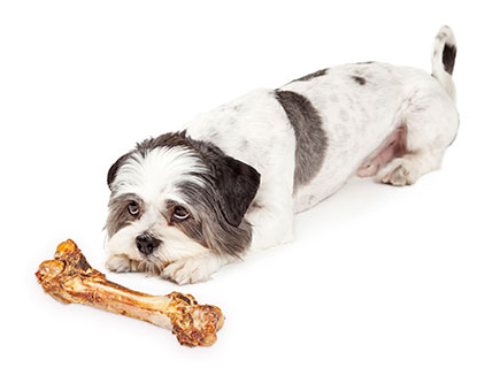Horses sweat, men perspire, ladies dew…and dogs pant. Dogs and cats don’t sweat because they don’t have sweat glands in their skin and armpits like people do. During the summer months, they can suffer heatstroke from overheating. This season can be downright dangerous for your cat or dog, so be prepared and protect them from the heat.
HEATSTROKE
 Dogs and cats are susceptible to heatstroke because they have limited mechanisms to cool themselves: panting and losing heat through their tongue, nose, and footpads. Certain types of animals are more prone to heatstroke than others. Dogs with flat faces, like pugs, bulldogs, or Boston terriers, have difficulty panting and thus can easily overheat. Also, dogs with heavy coats; older animals; obese dogs and cats; puppies and kittens under six months; pets who are ill; and pets on certain medications are at an even greater risk for overheating during the summer months.
Dogs and cats are susceptible to heatstroke because they have limited mechanisms to cool themselves: panting and losing heat through their tongue, nose, and footpads. Certain types of animals are more prone to heatstroke than others. Dogs with flat faces, like pugs, bulldogs, or Boston terriers, have difficulty panting and thus can easily overheat. Also, dogs with heavy coats; older animals; obese dogs and cats; puppies and kittens under six months; pets who are ill; and pets on certain medications are at an even greater risk for overheating during the summer months.
Nearly every case of heatstroke is preventable. Exercising and being left in a car are the two most common causes of heatstroke in dogs and cats. Dogs like to keep up with you while exercising and may not readily tell you they’re getting too hot until it’s too late. On a 75-degree day, the temperature inside a parked car—with the windows open—can quickly climb to over 100 degrees and cause overheating.
Here are some of the signs associated with overheating:
• Body temperature above 104 degrees F
• Excessive panting or open-mouthed breathing
• Lethargy, daze, or collapse
• Drooling, vomiting, or diarrhea
• Depression, stupor (acting drunk), or seizures
• Increased heart rate
• Bloody diarrhea or vomiting
• Bright red tongue or gums
If left untreated, heatstroke can be fatal. The easiest way to cool your pet is to immerse it in cool water in a bathtub, kitchen sink, bucket, or swimming pool, spray with a garden hose, and then take your pet to the vet as soon as possible. You can also change towels soaked in cool water every five minutes because they will heat up fast. NEVER use ice water to immerse your pet or to moisten towels, as this can cause the reverse problem of hypothermia. Pointing a fan at your pet will help, too. If your dog or cat can drink, offer it cold water or even ice water. If your vet is far away, keep towels soaked in cool water over your cat or dog until you arrive, and have the air conditioner blowing directly on your pet.
STEER CLEAR
 Dogs and some cats love to ride in the car, but you must resist the urge to let them accompany you during the summer months. Once temperatures soar above 75 degrees F, your car becomes a coffin. Even with the windows open, the temperature inside a car can quickly rise to deadly conditions. NEVER leave a pet in the car alone. It only takes a few minutes for the temperature to rise above 100 degrees, with fatal consequences for your pet. Every summer, emergency clinics, and vet hospitals treat dying pets that often cannot be saved. These tragedies are completely preventable! Unless someone is always in the car with your pet with the air-conditioning on, please leave your cat or dog at home.
Dogs and some cats love to ride in the car, but you must resist the urge to let them accompany you during the summer months. Once temperatures soar above 75 degrees F, your car becomes a coffin. Even with the windows open, the temperature inside a car can quickly rise to deadly conditions. NEVER leave a pet in the car alone. It only takes a few minutes for the temperature to rise above 100 degrees, with fatal consequences for your pet. Every summer, emergency clinics, and vet hospitals treat dying pets that often cannot be saved. These tragedies are completely preventable! Unless someone is always in the car with your pet with the air-conditioning on, please leave your cat or dog at home.
WALK THIS WAY
 To keep your pet from overheating, don’t exercise with your cat or dog during the hottest part of the day, 11 a.m. to 3 p.m., and be observant of your pet when you take it outside. Catching heat exhaustion early is the key to successfully treating this all-too-common deadly condition. Exercise your pet either early morning or late afternoon, and bring plenty of water. Before starting your walk, test the sidewalk with the palm of your hand. If it’s too hot to touch, it can burn your pet’s footpads, and you should avoid this surface. Stick to dirt paths, grass, or concrete surfaces. Keep your pet off the asphalt, which retains heat due to its composition and dark color; the tar base can melt and stick to the pads of your pet’s feet, causing burns. If you suspect your pet has burned its paws, you must take it to the vet immediately. Apply a cool, wet washcloth to the footpads to help cool your pet at the end of a long walk.
To keep your pet from overheating, don’t exercise with your cat or dog during the hottest part of the day, 11 a.m. to 3 p.m., and be observant of your pet when you take it outside. Catching heat exhaustion early is the key to successfully treating this all-too-common deadly condition. Exercise your pet either early morning or late afternoon, and bring plenty of water. Before starting your walk, test the sidewalk with the palm of your hand. If it’s too hot to touch, it can burn your pet’s footpads, and you should avoid this surface. Stick to dirt paths, grass, or concrete surfaces. Keep your pet off the asphalt, which retains heat due to its composition and dark color; the tar base can melt and stick to the pads of your pet’s feet, causing burns. If you suspect your pet has burned its paws, you must take it to the vet immediately. Apply a cool, wet washcloth to the footpads to help cool your pet at the end of a long walk.
BLOCK THAT SUN
Sunlight is necessary to produce vitamin D, which helps protect the skin as well as balance the body’s calcium levels and metabolism. However, too much of anything can be harmful, and too much ultraviolet (UV) radiation can cause sunburn or solar dermatitis in some animals. White cats and certain breeds of dogs, like boxers and Weimaraners, are especially vulnerable to sunburn and therefore need extra protection from the sun. Sunburn is also common in white and shorthaired dogs.
Sunburn usually occurs on the abdomen, bridge of the nose, ear tips, groin, and insides of the legs. The belly is prone to sunburn because of sunlight that reflects up from the sidewalk. Dogs that spend much time at beaches can get sunburned as the sun reflects up from the hot white sand. Dogs and cats don’t need to be outdoors to get sunburned because UV radiation can pass through windows. Sunburn and repeated excessive exposure to UV radiation can initially cause redness and hair loss on the ear tips, bridge of the nose, or abdomen. They may lead to skin infections, skin ulcers, and cancer.
To protect pets from sunburn and its consequences, you can apply sunblock to the small susceptible areas of the skin, such as the bridge of the nose and ear tips. You can apply sunblock along any part of the fur on your pet’s head and back. For cats, sunblock is usually sufficient. You should use SPF 30, and you can mix it 50/50 with Vaseline. Sunblock isn’t effective on the tummy for dogs that spend a lot of time outdoors since it can rub off. Spandex bodysuits are designed to block UV radiation that will effectively protect your active dog from sunburn.
INSECT BITES
Spiders, bees, yellow jackets, hornets, and fire ants all bask in the warmth of sunny summer days. Curious pets often get stung on the face and paws as they investigate or try to play with these stinging creatures. Most reactions manifest as swelling and itching of the face, eyes, and ears or small circular areas of swelling all over the body called hives or urticaria. These symptoms are easily treated with antihistamines. However, some dogs and cats will develop life-threatening clinical signs such as breathing difficulties and swollen throats, which require immediate veterinary care; if left untreated, this can be fatal. To minimize the chance of insect bites or stings, check your yard for any nests or hives and keep pets away from these areas until you have them removed by a pest control company.




